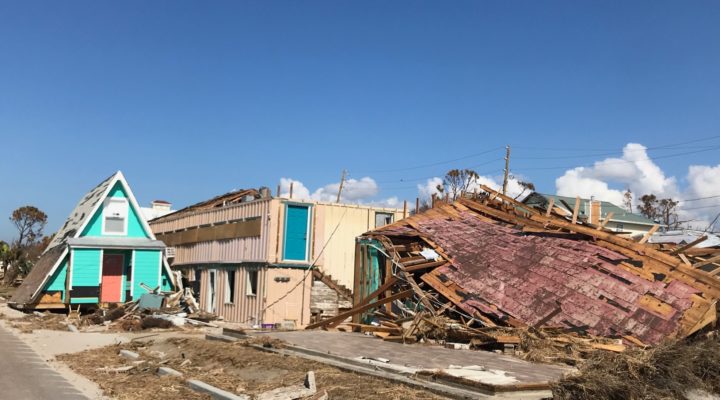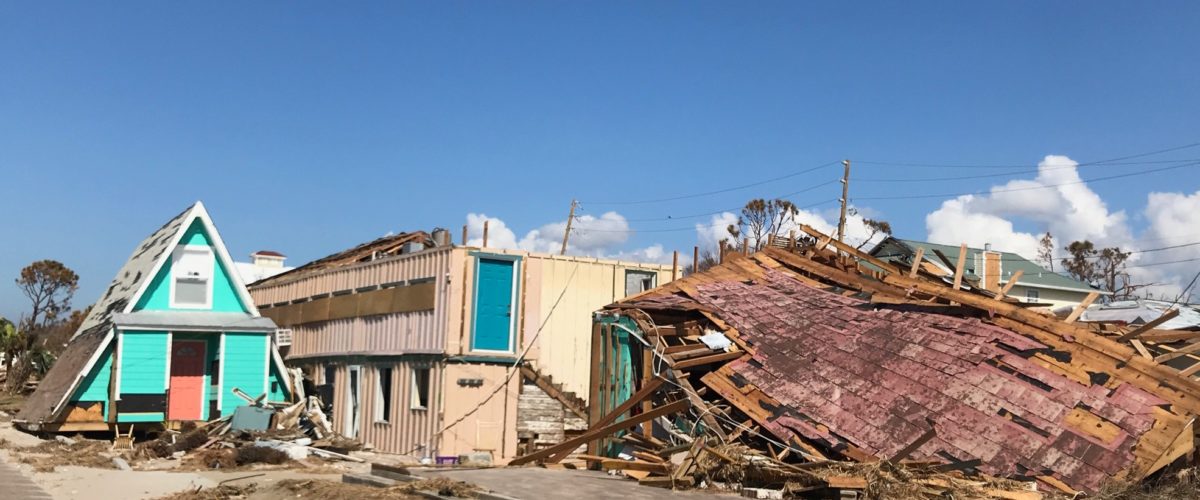The 2018 hurricane season, which officially ends today, unleashed yet another barrage of terrifying and destructive weather that left huge swaths of the nation soaked, flattened – or both.
And as usual, it is those with the fewest resources who have been left with the biggest obstacles to overcome.

Rachel Gunter Shapard
“There is no doubt that those living in generational poverty are hardest hit during a disaster,” said Rachel Gunter Shapard, the associate coordinator of the Cooperative Baptist Fellowship of Florida and an organizer of its disaster response efforts.
But there are factors other than poverty that can make people especially at-risk in catastrophic situations. Citizenship, ethnic, physical and mental health statuses often serve as predictors for heightened post-disaster suffering.
The federal government documented the phenomenon in a 2017 study that looked widely at the impact of natural disasters on persons “of low socioeconomic status,” or “low SES.” It found that marginalized people are adversely affected in advance, during and after disaster events.
“For example, vulnerability for people of low SES may refer to greater likelihood of living in fragile housing, having difficulty accessing resources after a disaster, and experiencing trauma during and after a disaster,” the Substance Abuse and Mental Health Services Administration said in the report titled Greater Impact: How Disasters Affect people of Low Socioeconomic Status.
“It also may refer to lower likelihood of receiving warnings of disasters, having the ability to evacuate in response to disaster warnings, and being able to access post-disaster aid,” SAMHSA said.
‘Robbing us of resources’
Just about anyone who has worked in disaster relief and response ministry can verify the accuracy of that report.
“Yes, poor areas from my observation do suffer more and it’s mainly because the lack of resources,” said Ryan Clore, the pastor at First Baptist Church in Whiteville, North Carolina.
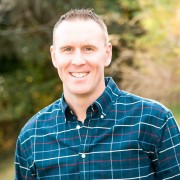
Ryan Clore
He and his congregation have had a front-row seat to that fact since Hurricane Florence flooded most of Columbus County, along with a lot of the rest of the state, in September. First Baptist is serving as a hub for visiting church disaster relief teams participating in a CBF North Carolina-orchestrated recovery effort in the rural, isolated county.
Clore said the damage has been massive and demonstrates how geographic isolation can hinder recovery efforts for residents, regardless of income levels. That’s partly because most of the major relief work is focused on more populated, urban centers.
“People don’t hear about Columbus County. They hear about the bigger cities,” Clore said. “We pretty much got overlooked.”
Two other factors are complicating the recovery in the region, he said. One is that some of the impoverished parts of the county, which include African-American communities, were still recovering from hurricane damage sustained two years ago.
“Then this hurricane came through and flooded their houses again,” Clore said of Florence. “Most homeowners had not received their money from FEMA.”
The second is Hurricane Michael, which destroyed portions of the Florida Panhandle and South Georgia in October and led faith-based recovery teams in those states to stay home.
“Michael is robbing us of resources, and rightly so,” he said. “But here, you can go to every end of the county and you have devastation.”
‘They don’t want to go to a shelter’
Cultural barriers can also cause communities to be isolated, even in urban areas, said Butch Green, CBF field personnel and leader of the Fellowship’s Hurricane Harvey recovery in Houston, Texas.

Butch Green
The victims in those cases tend to be refugees and immigrants for whom language and cultural attitudes can serve as blocks to information and resources. So, too, can unfamiliarity with hurricanes and their potential severity among people resettled in the U.S. from other parts of the world.
“What I found was a lot of communication issues – communication and education,” he said of the 2017 storm. “I spoke with a lot of families, especially refugees, who had a lot of language issues.”
Lacking computers or even televisions deprived some of alerts and, after the storm, of information on how and where to receive help.
“They are not in the same communication paths online to learn how to even apply for aid that exists, so they get frustrated,” Green said.
Culture can also be a hindrance for some groups, said Ruben Ortiz, the Latino field coordinator for CBF.

Ruben Ortiz (Photo/Dede Smith)
Historically, Hispanic societies have placed emphasis on family, community and church when facing adversity, Ortiz said. Many have struggled in the U.S. with understanding the need for insurance, let alone being able to afford it.
“For first-generation Latinos it’s difficult to have reserves for catastrophes. In our culture, we are not prepared in advance for these things,” he said.
As a result, Hispanics are sometimes less likely to evacuate ahead of major storms “because they don’t have money to stay in hotels in other places,” Ortiz said. “And they are many times not living in secure houses but in mobile homes and houses that are very susceptible to storms.”
For some immigrants there are fears in evacuating to shelters.
“The other thing is legal,” Ortiz said. “They don’t want to go to a shelter because they don’t want to be exposed to immigration officials in this climate in our country right now.”
Others considered to be especially at-risk after natural disasters are the elderly and disabled, said Baylor University legal expert Stephen Rispoli.
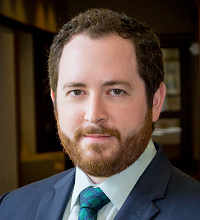
Stephen Rispoli (Photo/Baylor Law)
People in those groups are the biggest targets of unscrupulous contractors and scam artists who play on the social isolation of this group of storm victims, said Rispoli, assistant dean of student affairs and pro bono programs at Baylor Law School.
“The elderly and disabled are more likely to be trusting of someone who just shows up,” he said. “People in these stages of life may miss those red flags, which is why they are the normal target of scams.”
‘Devastating to the poor’
A reluctance to trust outsiders often inspires the people in some communities to trust only each other during the stressful times following major disasters, said David Deulofeu, the pastor at Templo Bautista de South Houston.
Speaking by phone through an interpreter, Deulofeu said close to two dozen families in his congregation were severely impacted by Hurricane Harvey, as was about 90 percent of the neighborhood surrounding the church.
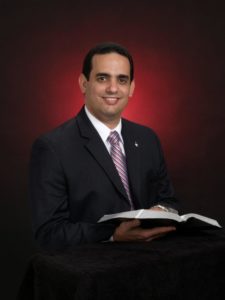
David Deulofeu
Many, including the church, were without insurance. But the community banded together, with volunteers pitching in to help repair each other’s homes and the church.
It’s helped many to remember that family and church are the most reliable sources of strength in tough times.
“It was a very draining and hard process, but spiritually it showed how fleeting the material things are and how important love and compassion are for each other, and that we can only depend on Christ,” he said.
That message was reinforced by help from churches in neighboring communities and specially from CBF efforts led by Butch Green.
“They helped rebuild our church,” he said.
That’s the blueprint for many faith-based disaster recovery groups, including the Fellowship, said Larry Hovis, executive coordinator of CBFNC.
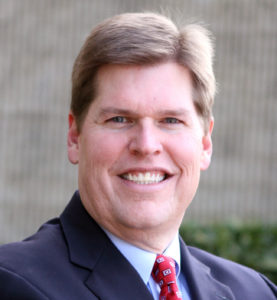
Larry Hovis
The approach generally is to concentrate long-term recovery efforts in areas that have little or no internal or external resources, Hovis said.
Another common denominator, he added, is the presence of a CBF church from which local and visiting teams can work.
It’s how the Fellowship in North Carolina has come to focus its resources in Whiteville and in Trenton.
“They are both in poor counties with small populations and not much infrastructure and resources to deal with this internally,” Hovis said.
And for those on the margins, just waiting for those resources to be marshalled can cause huge suffering, Shapard said.
“It takes so long for the organization of resources to occur following a disaster,” she said. “Those who do not live in poverty are inconvenienced, but it is devastating to the poor.”
Previous stories:
Couple narrowly survives Hurricane Michael only to face destruction-induced trauma
Some responders still barred from areas ravaged by Hurricane Michael
Harvey survivors watch, pray and remember as Florence bears down on Carolinas
Physical recovery progressing a year after Harvey. Emotionally, not so much
Pastor’s Facebook posts offer vital information, pastoral care to Hurricane Florence victims
Mother’s death, Hurricane Florence devastation, bewilder Congo refugees

